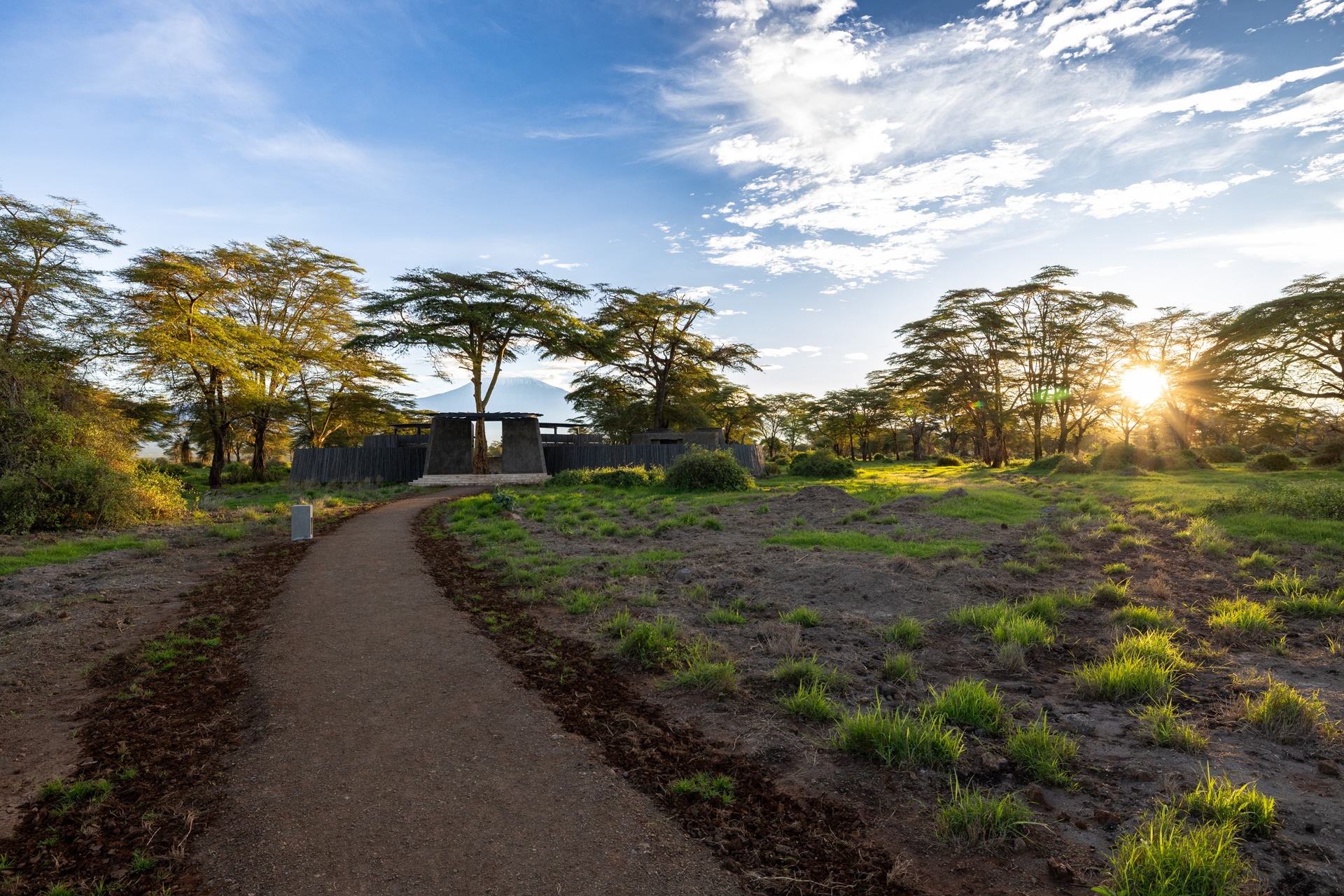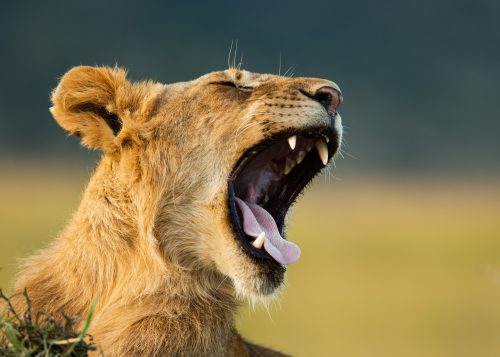
It was late in the afternoon when we just about drove into a herd of three elephant bulls including Pascal, one of Amboseli’s famous Super Tuskers. We decided to wait there, observing them for nearly an hour, and it was during this time that I truly understood the majesty of Amboseli. To design and curate landscapes in a place such as this is a dream I’m delighted to call reality.
Sitting for an hour in a game vehicle was a rare and welcome break from a jam-packed few days. My brief for the Angama Amboseli project was multifaceted: firstly, to tuck the new buildings into the landscape in a way that feels natural; then to create privacy between Guest Suites and gathering areas; lastly, to build back diversity within the Sanctuary following a three-year drought.
If you ask a Kenyan nursery owner if a tree they’re selling is indigenous the answer is always 'yes', but unfortunately, this is seldom true. In a region home to so many magnificent trees and plants, for example, the Yellow-stemmed Fever Tree, Baobab, Sausage Tree and Desert Rose; I was shocked to witness the lack of awareness or appreciation for indigenous vegetation. Tree and plant sourcing for this project would therefore prove to be a colourful journey.
While the climate is mostly hot and arid, the lodge is situated within a riverine microclimate. Fed by the perpetual melting snow high up on Kilimanjaro, the modest river flows all year round and is a magnet for wildlife. It also creates a passage of green within an otherwise brown landscape, where grasses grow upon its banks and trees extend their roots to drink from its cool waters.
This blog wouldn’t be complete without some appreciation for the glorious trees within the Sanctuary. The great Acacia family of trees define the landscape here. You’ll find the Yellow-stemmed Fever Tree (Vachellia Xanthophloea — previously known as Acacia Xanthoploea) surrounding the lodge. The colour of the trees inspired many of the design choices, including the fabulous couch in the Guest Area. Within 100 metres or so of the river you can find the Riverine Acacia, while the Vachellia Tortilis (widely and previously known as Acacia Tortilis) is slightly further away from the river as it doesn’t like its feet to be wet. Others along the river include the Sycamore Fig (Ficus Sycomorus) and another tree that caused a giggle or two (and still does)… the Tabernaemontana Ventricosa.
When we were planting an area that required a bit of screening, I asked our friends at the nursery in Nairobi for some species which the elephants don’t eat. They knew just the tree but were reluctant to share its name, giggling all the while. I remembered seeing it in my earlier site visit in May — two round fruits sit side by side which inspired the Maasai to jokingly refer to it as 'Testicle Tree’. Its more PC, or common name is the Forest Toad Tree, and it grows all along the river.
Dotted here and there are Desert Dates (Balanites Aegyptiaca) which the giraffes adore. And for a shady hideaway, the Shepherds Tree (Boscia albitrunca) hosts a range of creatures escaping the mid-day heat (including humans — you can spot shepherds sitting under these along the road to the National Park). These trees all add a wonderful element to the landscape and play host to many of the creatures that live there.
Tree and shrub planting will be an ongoing program for years to come for two reasons. Firstly, to replenish the landscape after rains failed to arrive for three years and the animals devoured much of the vegetation that was able to withstand the water shortage. And secondly, to replace the invasive species which have crept in.
Much of what has been planted has and will be munched by elephants. We protect some with thorny branches (though this forms more of a hors d'oeuvre), some with sharp rocks and some we’ll keep under the watchful eyes of the Askaris (as night watchmen) just to give them a fighting chance. But this landscape is theirs after all, and we’re only visitors lucky enough to be able to bask in their presence.
Ian thought it was important to describe the following terms for those unfamiliar with the finer details of landscaping terminology:
- 'Alien vegetation' refers to plants or trees which originate elsewhere
- 'Invasive vegetation' are aliens that spread so rapidly that they take over and dominate the landscape such as West Indian Lantana and Sodom apple (Solanum Incanum) found in the Sanctuary
- 'Indigenous vegetation' can belong to a wide region spanning several countries
- 'Endemic vegetation' is unique to a small area. Therefore, something can be indigenous to a country but non-endemic. And, sometimes non-endemic indigenous species can become invasive.
Filed under: Stories from Amboseli
Subscribe for Weekly Stories
Comments (1):
3 December 2023
Beautiful sceneries of the angama amboseli

Angama Safari Offers